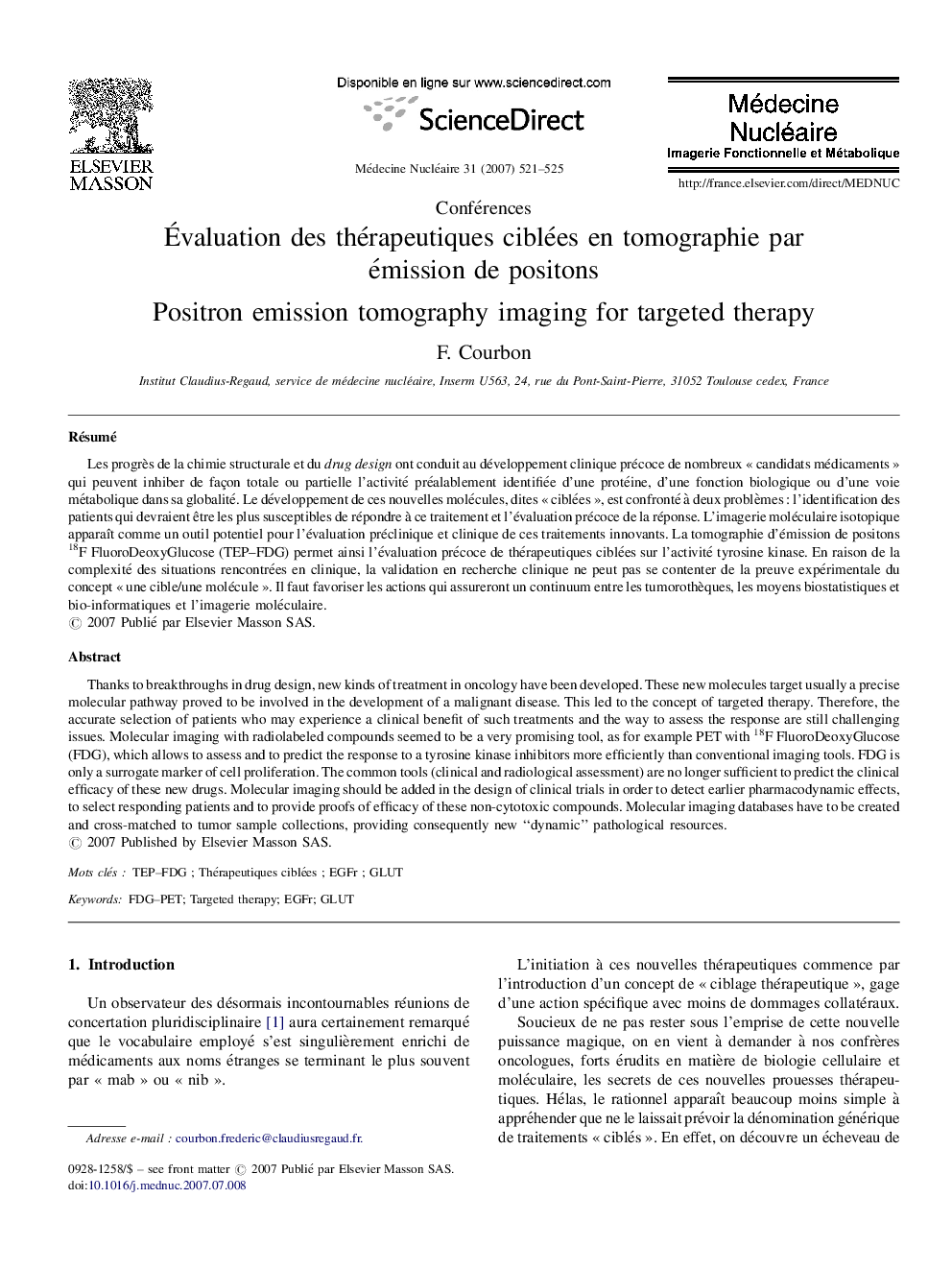| کد مقاله | کد نشریه | سال انتشار | مقاله انگلیسی | نسخه تمام متن |
|---|---|---|---|---|
| 4244719 | 1283416 | 2007 | 5 صفحه PDF | دانلود رایگان |

RésuméLes progrès de la chimie structurale et du drug design ont conduit au développement clinique précoce de nombreux « candidats médicaments » qui peuvent inhiber de façon totale ou partielle l’activité préalablement identifiée d’une protéine, d’une fonction biologique ou d’une voie métabolique dans sa globalité. Le développement de ces nouvelles molécules, dites « ciblées », est confronté à deux problèmes : l’identification des patients qui devraient être les plus susceptibles de répondre à ce traitement et l’évaluation précoce de la réponse. L’imagerie moléculaire isotopique apparaît comme un outil potentiel pour l’évaluation préclinique et clinique de ces traitements innovants. La tomographie d’émission de positons 18F FluoroDeoxyGlucose (TEP–FDG) permet ainsi l’évaluation précoce de thérapeutiques ciblées sur l’activité tyrosine kinase. En raison de la complexité des situations rencontrées en clinique, la validation en recherche clinique ne peut pas se contenter de la preuve expérimentale du concept « une cible/une molécule ». Il faut favoriser les actions qui assureront un continuum entre les tumorothèques, les moyens biostatistiques et bio-informatiques et l’imagerie moléculaire.
Thanks to breakthroughs in drug design, new kinds of treatment in oncology have been developed. These new molecules target usually a precise molecular pathway proved to be involved in the development of a malignant disease. This led to the concept of targeted therapy. Therefore, the accurate selection of patients who may experience a clinical benefit of such treatments and the way to assess the response are still challenging issues. Molecular imaging with radiolabeled compounds seemed to be a very promising tool, as for example PET with 18F FluoroDeoxyGlucose (FDG), which allows to assess and to predict the response to a tyrosine kinase inhibitors more efficiently than conventional imaging tools. FDG is only a surrogate marker of cell proliferation. The common tools (clinical and radiological assessment) are no longer sufficient to predict the clinical efficacy of these new drugs. Molecular imaging should be added in the design of clinical trials in order to detect earlier pharmacodynamic effects, to select responding patients and to provide proofs of efficacy of these non-cytotoxic compounds. Molecular imaging databases have to be created and cross-matched to tumor sample collections, providing consequently new “dynamic” pathological resources.
Journal: Médecine Nucléaire - Volume 31, Issue 9, September 2007, Pages 521–525